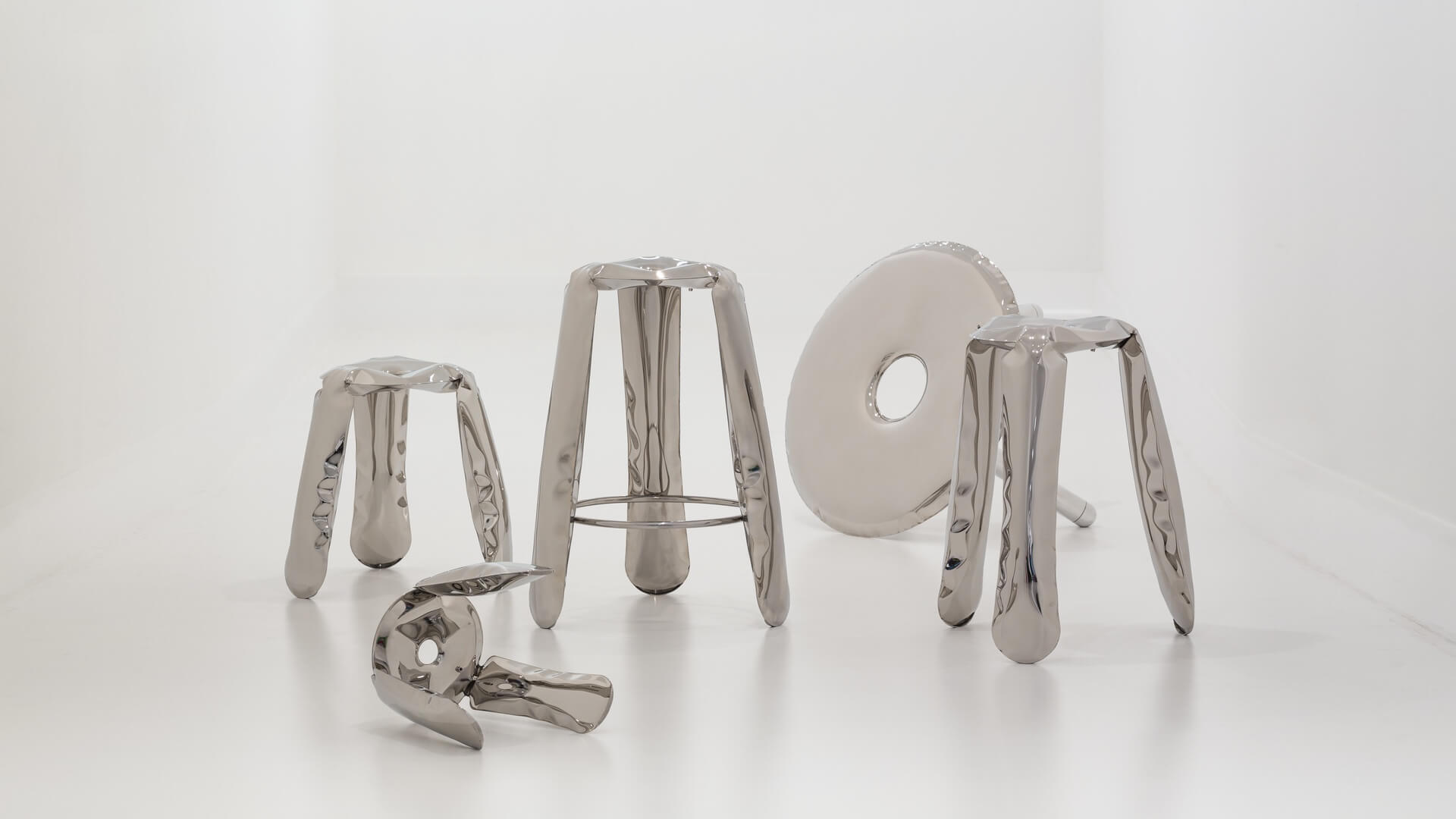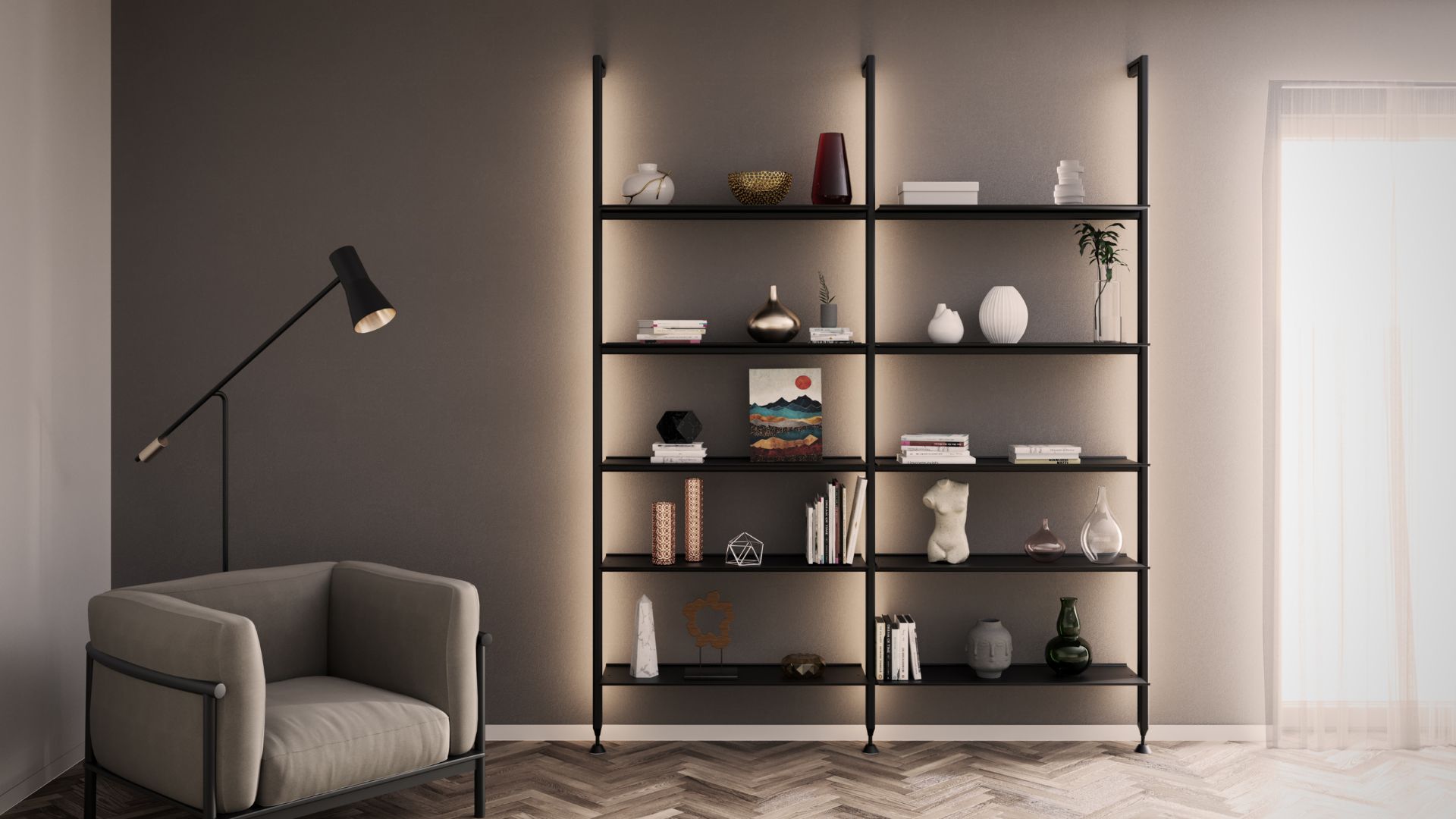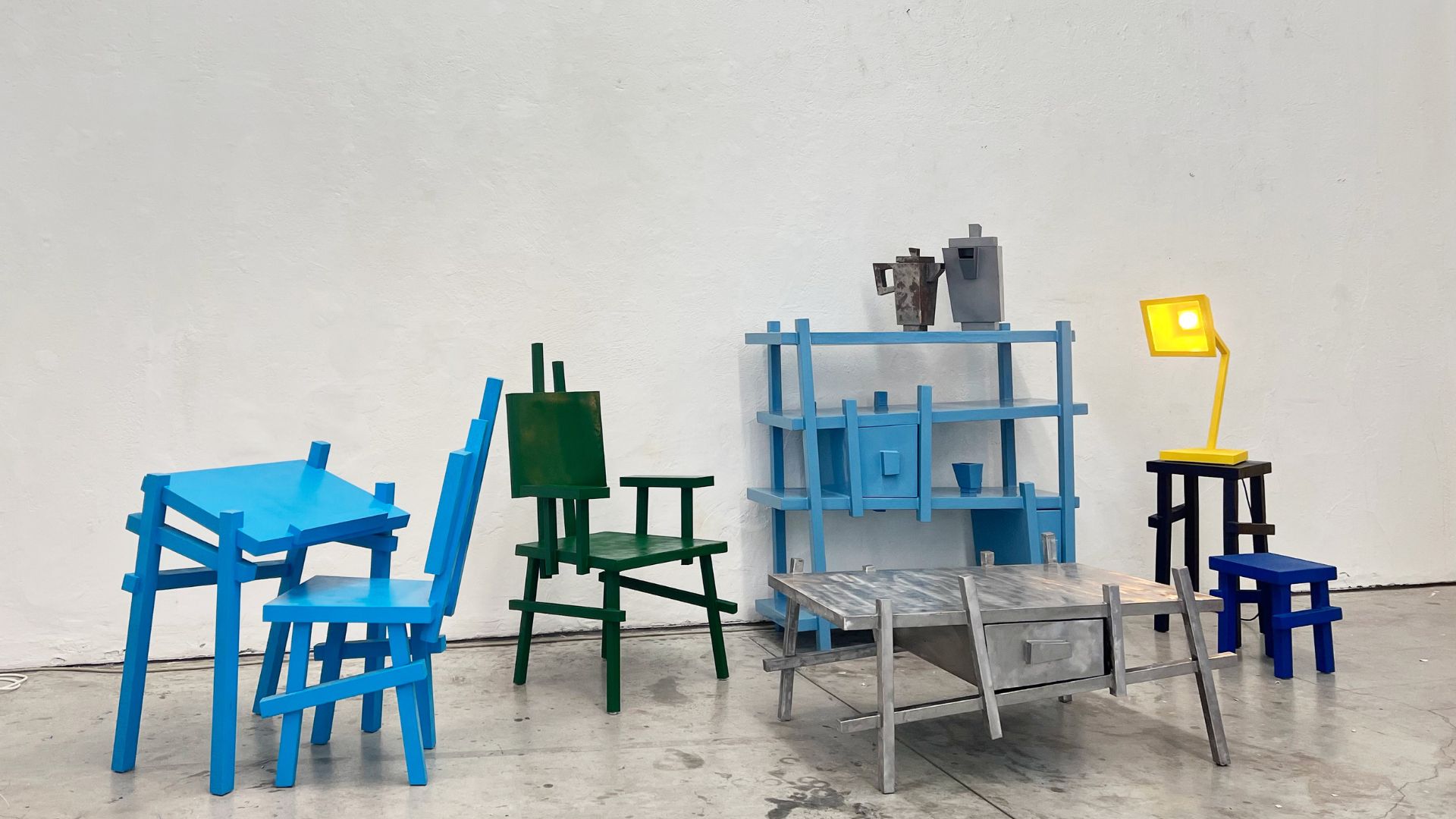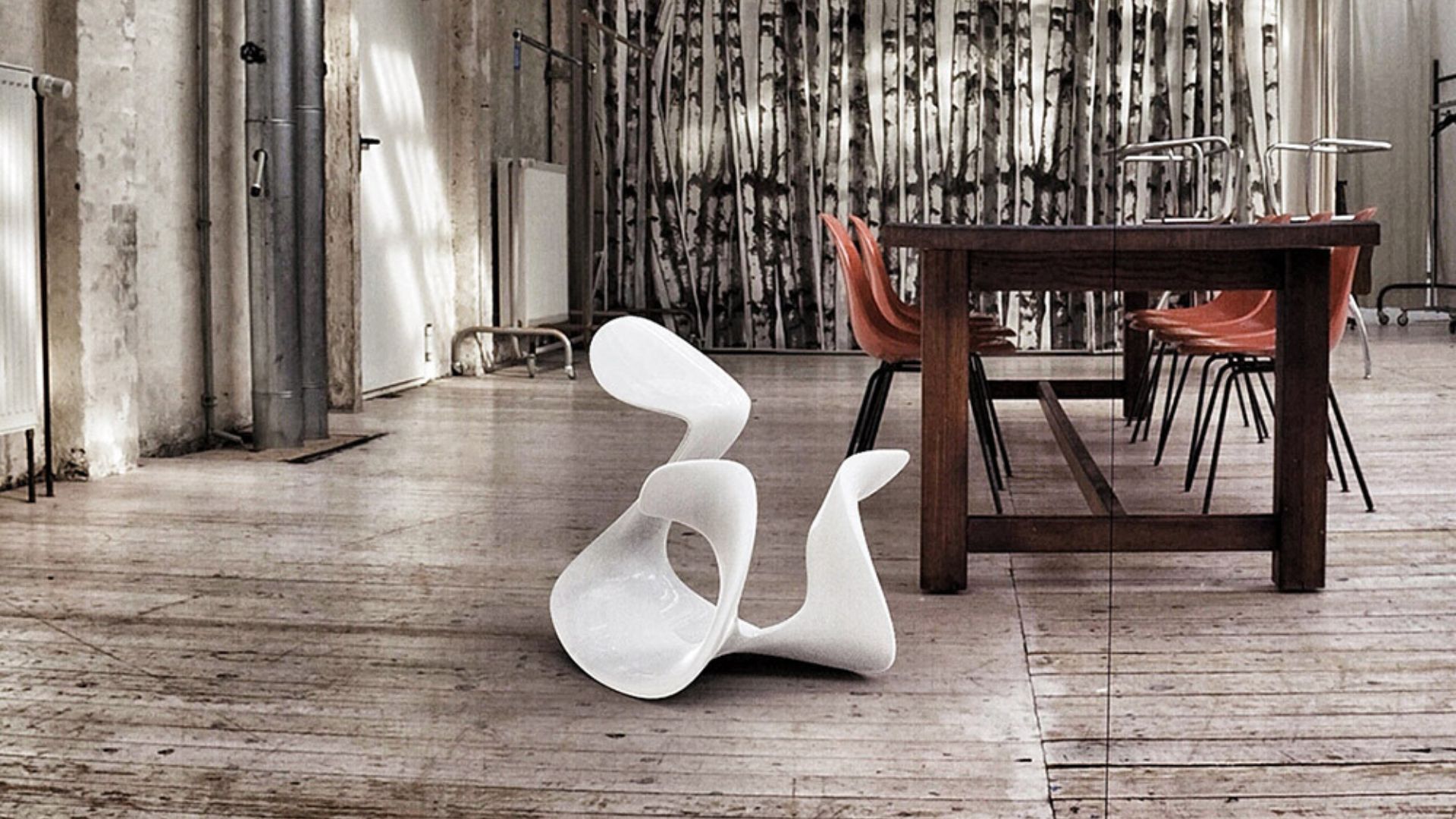The sustainable-inflatable design language of Zieta for stylish metal furniture
Zieta, founded by architect Oskar Zieta, produces metal pieces with innovative techniques inside a circular economy production process that preserves resources.

Zieta aims to deliver uniqueness and customization in design and construction while keeping the production, transport, and warehousing innovatively efficient. The key to their production is using metal inflated with air, making their products durable, recyclable, and very light.
Zieta’s design process is based on using metal that can be returned to circulation in the form of a new piece again and again. The studio functions on a circular economy principle, eliminating waste and conserving resources.

The minds behind Zieta – Oskar Zieta
Oskar Zieta is the founder and CEO of Zieta. He is an architect, graduated from the Swiss Eidgenössische Technische Hochschule in Zürich. He calls his attitude towards design “Prozessdesign” and it is the name of his two studios in Wrocław and in Zurich. The Wire Magazine called his designs “furniture of the future” and they have been featured at the Centre Pompidou in Paris, the Pinakothek der Moderne in Munich, Zurich Design Museum, and the Baden State Museum in Karlsruhe.
Oskar Zieta has been awarded the AUDI – Mentor-Price 2011, the Red Dot Award 2008, DMY Award for Innovation in production process 2008, the YDMI 2008, the German Design Council Prize 2009, the Forum Aid Awards 2009, technology Award – Materialica 2009, MUST HAVE Design Łódz 2011 and be nominated to the “Schweizer Design Preis” 2009 and the “Dobry Wzór” 2009.

Materials & Techniques – Metals and FiDU
The studio is run with a model of circular economy in mind, meaning that their system aims to eliminate waste and the never-ending use of resources by using a regenerative approach in contrast to the traditional model of production of “take, make, dispose”.
Zieta works with metals such as steel, copper, and aluminum that have a long life and can be recycled over and over without losing their key properties. They also make all their objects with FiDU (Freie Innen Druck Umformung), an innovative metal forming technology that allows a 2D sheet of metal to be transformed into a 3D object with pressurized air. The FiDU technique uses air to force the metal to expand and deform according to its natural characteristics. Specially designed shapes are cut and welded together, and then “inflated” with compressed air. Thus making the end products empty inside, requiring less material and energy compared to other metal forming technologies. Precise calculations allow Zieta to achieve the maximum efficiency in the use of metal while the generation of waste is radically minimized.
As if that wasn’t enough to eliminate waste, the Zieta objects are made entirely from a single material. Meaning that a single delivery from the sheet metal producer to the studio is needed to make them and that they are ideal for recycling.
The objects are designed for generations of users, as the metal needs to age in order to gain its noble quality and unique character for which it is valued the most. But, once an object has served its purpose, it can be fully recycled and returned to circulation in the form of a new piece of sheet metal.
Style and Aesthetics – A playful look that defines itself through production
At Zieta, the designers endeavor to design great forms through the process of creation. Free deformation allows them to create unusual pieces that reach their final and surprising form when they are completed. Their original technique, FiDU, expands and deforms the metal from inside by using air to shape it, resulting in an unprecedented look that is so unique to Zieta Studio. This is viewed by the design studio as a continuation of the craft, in which the material and the craftsman collaborate in creating an object and giving it its uniqueness.
The metal itself is transformed into mirrors, furniture, or accessories that can be shiny and chromed or opaque like granite. The range created is utterly astounding. Their gradient collection dives into the use of color whereas their furniture explores the boundaries of shapes and forms to redefine what makes the essence of traditional objects like tables and chairs. The end result is mirrors that look like drops of water on a wall or a pool floater, and tables that appear to be floating suspended by futuristic-looking appendices. The creativity throughout Zieta’s collections is breathtaking.
“Metal is a very ‘smart’ material that is naturally balanced and very well known to man. A material that ages beautifully and withstands the test of time.” – says founder Oskar Kieta. In addition to its aesthetic appeal, FiDU is a material and energy-saving technology, that enables Zieta to discover new possibilities as they play with forms and deliver a beautiful, innovative and surprising outcome to their customers.

Thinking of the future – Taking Zieta into space
The low weight of FiDU objects means low energy consumption during transport, as we mentioned before. But what is more, it means that the objects can be delivered in an uninflated form and then blown in the target location.
This opens up enormous opportunities for the studio to use the technology beyond artistic design and in areas such as space exploration, where weight and volume are of great importance during transport, as well as in industry in general, in architecture, in load-bearing structures or in mining. Zieta is currently exploring possibilities for the use of their innovative production techniques across various fields in the near future.

Design memento – Metal as the ultimate eco-friendly material
The use of metal is the key. Steel, copper, and aluminum are durable, lasting materials with excellent properties so the objects made from them are an investment for more than one generation. “We were eco-friendly before it was cool,” jokes Oskar Zięta, the founder of the studio and its creative heart and mind.
According to data from metals production and processing trade associations producing steel or copper through recycling is much less energy-intensive than producing them from ore. It requires up to 85% less energy in the case of copper and 95% in the case of aluminum. This is why in the near future we will have more and more recycled sheet metal in Europe so that metal creations like the ones of Zieta Studio will spread further out amongst the consumers.

The writer’s comment – Paving the way to the future, maybe even space exploration
I truly believe that objects with the highest coefficient of expansion will be the future of design and architecture. Thanks to its small size and low weight they could help in the colonization of Mars, or simply improve life for all of us here on Earth. It is high time we learned to recycle more and stuck to a circular economy model so that we stop abusing our very finite source of resources, our planet.
When will the Zieta studio manage to send its objects into space? Only time will tell. However, I am certain that they will continue to surprise us with their radical ideas, and novel ways to work with metals. Designing objects in such a way that generations of users can use them, that can be easily disassembled and completely recycled so that the materials are returned to circulation again and again.


















